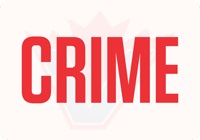
BY DAIRN SHANE
Preszler Law LLP
THE government is proposing a system to cap “minor injury claims” at $5,500. The question then becomes how will this work on a practical level, based on the recent government announcement.
It would seem to be that, if you are the victim of a car accident, and do not have a fracture or a diagnosed concussion (brain injury), you will automatically be slotted as a “minor injury”, subject to a $5,500 compensation limit. This will catch the majority of car accident victims. It is unknown how the cap system will treat scars. I also note that pedestrians who are hit are often thrown considerable distances without fractures or brain injuries – I presume such a person would be considered to have only suffered a “minor” injury.
This of course does not mean that you automatically get $5,500. It means that this is the maximum you can receive. If you wish to try to get the maximum, you will need to go argue your case before the BC Civil Resolution Tribunal. For that argument you would not use a lawyer – the amount simply does not justify it. Further, s. 20 of the Civil Resolution Tribunal Act discourages the use of lawyers, and requires hoops to be jumped through if one is going to represent you. Practically speaking, you would therefore have to argue the amount of compensation you are entitled to on your own, and present your own evidence.
Now, let us say that your injury goes on more than 12 months, and continues to be a problem for you. It may be chronic. Under the proposals, you can, in theory, apply to have your injury re-classified as a “moderate” or “major” injury.
How does that occur?
Well, you apply to the Tribunal for a reclassification. Again, and unless something changes with the Civil Resolution Tribunal Act, you will generally have to do this without the assistance of a lawyer.
You will then have to convince the Tribunal that you have an ongoing injury that is having a “significant” impact on your life.
What will be deemed to be “significant”? That is unknown.
Now, in our court system, the judges assess your injury on the basis of evidence, including your own testimony. Medical doctors and diagnosis are helpful but not required. The court recognizes that medical science has difficulty making a diagnosis of soft tissue injuries, chronic pain and headaches, because there is no way to physically prove or disprove their existence.
From what I have read, the Tribunal will require a medical diagnosis of your injury, and a medical person to say it is “significant”. This is different than what our courts require and will make it much more difficult for you, as an injured person, to prove chronic pain, chronic headache, or chronic mental injury. If taken to the extreme – i.e. if your own testimony as to your pains is considered not sufficient evidence of your pains – it would almost make it impossible. As an example, the Tribunal could conclude: “Dr. X has diagnosed a chronic headache, however that is based on her believing the claimant that he has ongoing headaches – as his testimony is insufficient to prove the existence of headaches, I reject Dr. X’s conclusion”.
The result of this would be that it would be virtually impossible to have your injury reclassified – even if you have lifelong chronic pain.
Further, let us not forget that, absent system changes, you will be on your own in front of the Tribunal – without legal assistance. Medical reports are expensive – an average cost would be $5,000. In the courts, lawyers obtain medical reports on your behalf, and pay for them. In front of the Tribunal, you do not have a lawyer, so it would seem to be up to you to pay out the $5,000 to try and convince the Tribunal that your injury is not “minor”. If your argument fails, you presumably are stuck with that bill, with an injury cap of $5,500.
Also, let us not forget that somebody will presumably be arguing against you. I do not know who that will be – but it will obviously be somebody from ICBC’s side who has legal training. Therefore, the Tribunal will be constituted in such a way that you will have no legal representation, will have to pay considerable sums for a doctor report, and will be up against someone legally trained on the other side. Will ICBC obtain medical reports to dispute your claims? That is unknown but certainly seems likely.
What about the Tribunal itself? Who is sitting on the Tribunal and making these decisions? How are they qualified? Who is picking them? What is their background? Will these people be former ICBC adjusters? Former ICBC defence lawyers? Will it be one person making the decision or a committee?
Overall, there are considerable concerns with how the cap system is going to work. To summarize:
– How is a “minor” injury claim defined?
– Will a person classified as a “minor” injury be allowed legal representation?
– What will be the test to pass for an injured person to prove their injury is not “minor”?
– If the injured person requires a doctor report to argue their injury is not “minor”, who is paying for that report?
– Will ICBC obtain medical reports to refute “moderate” or “major” injury claims in front of the Tribunal?
– Who will be sitting on the Tribunal and making decisions as to what is “minor” and what is not?
If these issues concern you, I would encourage you to contact your local MLA and voice your concerns.









